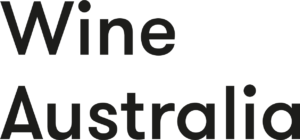Technical Review No. 263, April 2023
Background
Elevated concentrations of several volatile phenols and their glycosides in grapes and wines have been clearly associated with exposure of grapes to smoke. As such, these compounds are commonly used as markers of smoke exposure. However, traces of these compounds can also be detected in non-smoke-exposed samples, meaning that measurement of a low concentration of one or more smoke marker compounds does not necessarily indicate exposure to smoke. This complicates the interpretation of smoke analysis results. To address this, the AWRI initially collected data on the levels of smoke marker compounds in non-smoke-exposed grapes of 12 varieties from multiple Australian regions over four vintages, as reported in a previous Technical Review article (Coulter 2018). The grapes collected were fermented into wine and the levels of marker compounds in the wines were also determined. The data collected is generally described as the ‘background levels database’ and was recently published in an open access article (Coulter et al. 2022).
New varieties added
Since this publication, data for nine more varieties has been added to the background levels database, such that it now includes data from 765 grape samples and 732 wines, representing 21 varieties from more than 23 regions across Australia. The varieties covered are listed in Table 1.
Table 1. Varieties included in the AWRI’s smoke background levels database
| White varieties | Red varieties |
| Chardonnay | Cabernet Sauvignon |
| Gewürztraminer | Durif |
| Muscat Gordo Blanco | Grenache |
| Pinot Gris/Grigio | Mataro/Mourvèdre |
| Prosecco/Glera | Merlot |
| Riesling | Nebbiolo |
| Sauvignon Blanc | Pinot Meunier |
| Semillon | Pinot Noir |
| Verdelho | Sangiovese |
| Viognier | Shiraz |
| Tempranillo |
How can this data be used?
The background levels database can be used to help interpret results when grapes or wines are analysed for smoke markers, allowing producers to assess whether or not their samples are likely to have been exposed to smoke. Information about interpretation of results when compared to the background database in graphical form is available in an ‘Ask the AWRI’ article available from the AWRI website (Coulter 2022).
It is important to note that the data is only relevant to results generated using the same analytical methods as those used by the AWRI/Affinity Labs (GCMS analysis of volatile phenols and LCMS for direct measurement of glycosides). In practice, this means that for free volatile phenols, analytical results from other laboratories around the world can generally be compared to the AWRI’s volatile phenol background data, as laboratories tend to use similar methods for the analysis of volatile phenols. For glycosides, however, some laboratories use a hydrolysis/GCMS method, and results from this method cannot be compared to results from Affinity Labs’ LCMS method. More information about the differences between the two methods available in Australia can be found in Wilkes and Howell (2020), available online.
If it is intended to analyse wine samples for evidence of smoke exposure, it is recommended that they not have any contact with oak. Oak maturation can result in extraction of volatile phenols (due to toasting), some of which are detected by the smoke analysis. This makes it difficult to attribute elevated volatile phenol results to smoke exposure. Ideally, wine analysis should be combined with robust sensory assessments. This will give an indication of smoke exposure and the intensity of any perceived smoke taint.
Further useful data for Chardonnay, Pinot Noir and Shiraz
If analysis results for Chardonnay, Pinot Noir or Shiraz grapes are found to be above the upper limits expected for non-smoke-exposed grapes, recent data in the open access paper by Parker et al. (2023) could also be useful for interpreting the results. Data provided by these authors enables comparison of analysis results with concentrations of marker compounds in grapes for which the resulting wines were found to exhibit significant smoke flavour by sensory assessment. That is, if analysis results are the same as, or higher, than the data provided by Parker et al. (2023), there is high risk the grapes might produce wine affected by smoke flavour.
For further information on interpretation of smoke analysis results, or other technical winemaking or viticulture questions, contact the AWRI helpdesk on 08 8313 6600 or helpdesk@awri.com.au.
Acknowledgement
This work was supported by Wine Australia, with levies from Australian grapegrowers and winemakers and matching funding from the Australian Government. The AWRI is a member of the Wine Innovation Cluster in Adelaide, SA.
The Victorian and NSW State Governments, NSW Wine and Wine Victoria are gratefully acknowledged for their support for the expansion of varieties included in the background database.
Australian grape growers and winemakers who provided samples for the expansion of the background database during the 2021 and 2022 seasons are gratefully acknowledged.
References
Coulter, A. 2018. Smoke taint: analysis and interpretation. AWRI Technical Review (234): 5–11.
Coulter, A. 2022. Ask the AWRI: Interpreting AWRI smoke panel analysis results. Aust. N.Z. Grapegrower Winemaker (698): 42-43.
Coulter, A., Baldock, G., Parker, M., Hayasaka, Y., Francis, I.L., Herderich, M. 2022. Concentration of smoke marker compounds in non-smoke-exposed grapes and wine in Australia. Aust. J. Grape Wine Res. 28(3): 1-16.
Parker, M., Jiang, M., Bilogrevic, E., Likos, D., Gledhill, J., Coulter, A. D., Cowey, G.D., Simos, C. A., Francis, I, L., Herderich, M. J. 2023. Modelling smoke flavour in wine from chemical composition of smoke-exposed grapes and wine. Aust. J. Grape Wine Res: 1-14.
Wilkes, E., Howell, G. Cross-validation of 2020 grape and wine smoke analytical data between Vintessential and AWRI Commercial Services laboratories. Available from: https://www.awri.com.au/wp-content/uploads/2020/12/Smoke-analysis-cross-validation-report-FINAL-30-Nov-2020.pdf
 |
 |
 |

This work is licensed under a Creative Commons Attribution-NonCommercial-NoDerivatives 4.0 International License.

